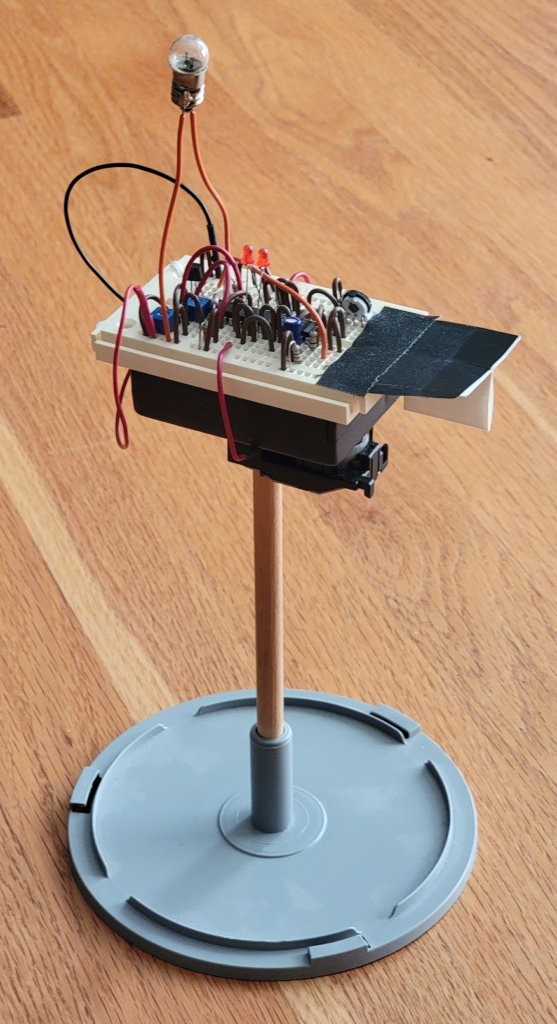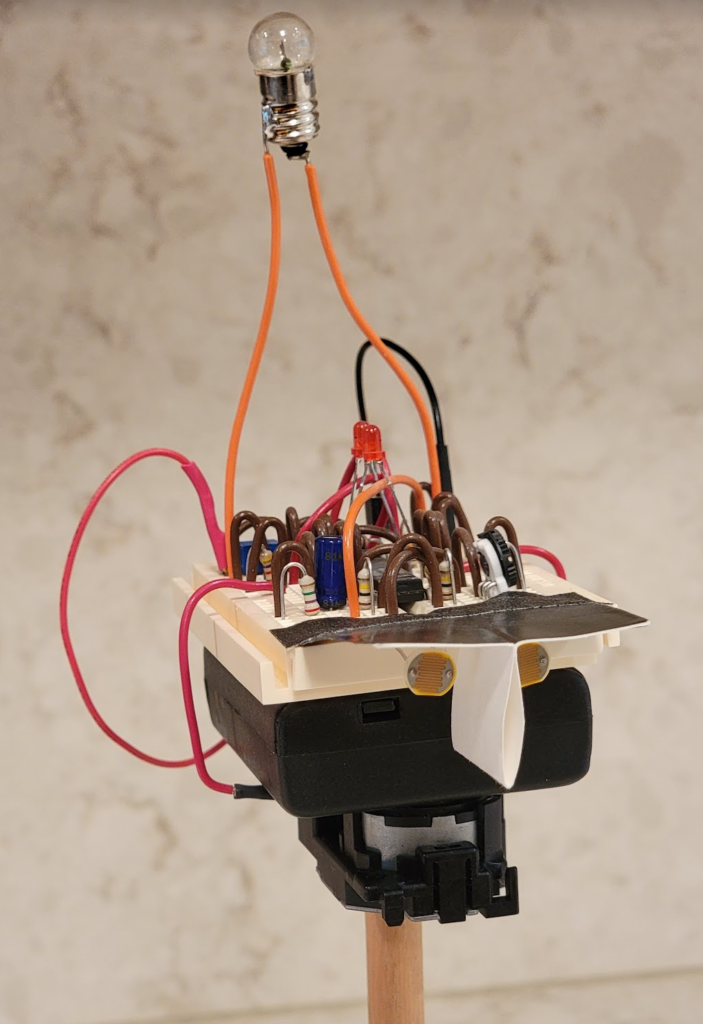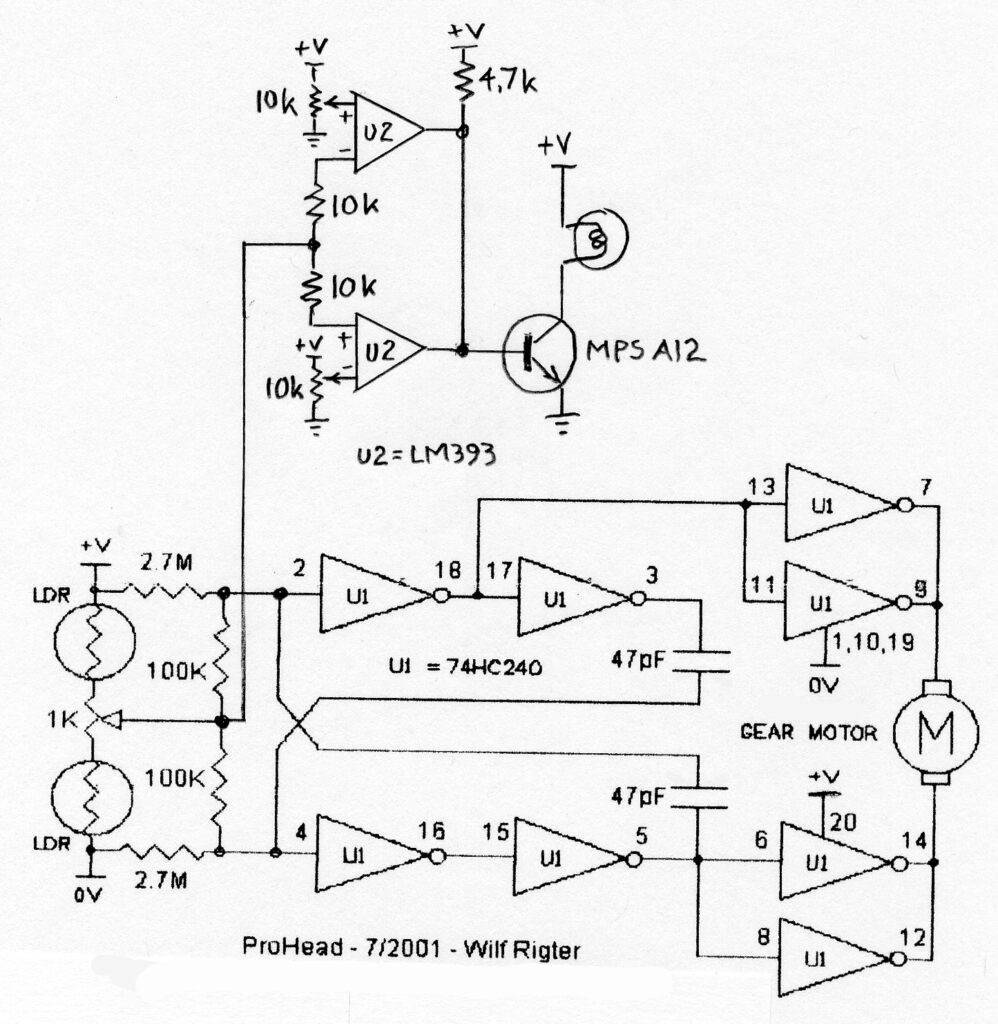Published May 27, 2023 by Scott Allen Burns
This project concerns a mechanism that rotates to locate the brightest light in its vicinity. It was a popular topic back in the days of BEAM Robotics. The BEAM community usually referred to this type of device as a “head” mechanism. Here is an example the device:
Two “eyes” are located under the black and white “nose” extension:
Each eye is a light-dependent resistor (LDR) that changes resistance value in response to a change in illumination level. The nose is a vertical strip of paper that casts a shadow on an eye when it is pointed away from a light source. The circuit operates by rotating the device until the two LDRs are equally illuminated, that is, so that the nose doesn’t cast a shadow on either LDR. This causes the device to point toward the brightest light in its vicinity.
Unless the direction of the brightest light source is changing, the mechanism is pretty boring because it just sits there pointing in the same direction.
Another feature of this design is that a small light bulb has been added above the light seeker. The circuit is designed so that the light bulb illuminates when the light seeker is “locked on” to the brightest light, and is no longer rotating. This light source will be used in this project to affect the behavior of other light seekers in a group setting.
Imagine setting several of these devices in a dark room, all in the vicinity of each other. Suppose one of the devices has its light bulb on. Then all the other devices will rotate to point at it. But once a light seeker locks on to that light bulb, its own light bulb will go on, changing the illumination pattern sensed by all the other light seekers. The other light seekers will respond to this change in illumination and rotate to seek out the new brightest direction. But in doing so, their own light bulbs will turn off, causing further changes to the illumination pattern.
It is difficult to predict what the overall dynamics of the system will be. Are there “fixed points” to this system, where all of the light seekers are motionless, are locked on to the brightest direction that they sense? I had to find out. Here is the result of an experiment with five interacting light seekers:
Interestingly, the system does eventually settle down to a fixed point, but not until a considerable amount of chaotic motion takes place.
Circuit Design
The circuit is based on a circuit posted to the BEAM discussion group by Wilf Rigter in 2001. I modified it to add the lock-on lamp. Here is the circuit:
It uses two integrated circuit chips, the MC74HC240 (Octal 3-State Inverting Buffer/Line Driver/Line Receiver) and the LM393 (dual comparator). Wilf describes the operation of this circuit in this PDF.
Enjoy!
________________________________________

Complex behavior of multiple interacting light-seeking “head” mechanisms by Scott Allen Burns is licensed under a Creative Commons Attribution-ShareAlike 4.0 International License.


